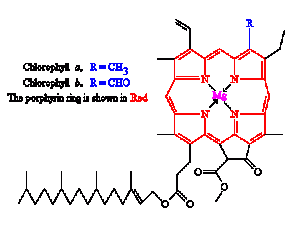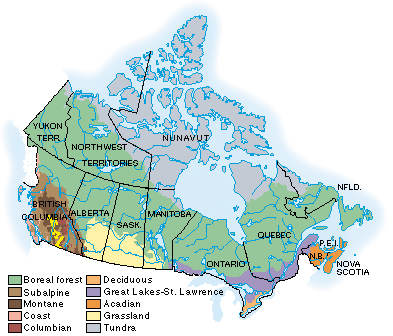I’ve been thinking of how to get people to read my blog.. and it’s not easy work! I think you really need to be committed to it to make it appealing to people. So now the question is how to make it so I am committed to this blog, much like thousands/millions of people I have many things going on thus what will push me to come online at least daily to right something worth my time and yours. What I came up is I need to learn something and then share it. Everything you see now days on the web is mostly to learn, except now maybe 9gags, or collegehumour which are two great websites to kill time and kill some brain cells. The majority of people out there, I think want to learn something whether it is how the word Gossip came into the dictionary or how the American campaign is going. So from now on I will learn something every day and try to dumb it down as much as possible for everyone to understand. When I say dumb it down I mean making it as simple as possible, because I for one have a hard time learning new things but I’m gonna try my hardest to do so. Hopefully what I am hoping out of this is that many readers will like this so then they can tell me what I should learn and try to make that more available for others. I’ve been looking at a lot of websites and most of the times I find it hard to understand what they are trying to communicate with the public, so hopefully with this blog I’ll have enough feedback so you can tell me what I should do better to make it clearer for you.
My first post will be answering a question that I have been wondering since I was maybe 7 years of age; Do pine trees filter air?
I think this is an important question, it may be evident to some but to me it’s puzzling. In Canada where I live, we have the great Boreal Forest, which is mostly made of coniferous trees.
So is this forest actually helping to lower the excess greenhouse gasses (the CO2 in the air) and change that in O2 which we can breath..?
To begin answering this question, I think it is crucial to understand how does photosynthesis occurs because then understanding this maybe the next time you see a plant, a bush, a flower you can answer this question without having to research it.
Photosynthesis
This is a huge process, in a nutshell it take CO2 in the air separates the 2 carbon atoms and then it is left with an O2. However a Carbon – Oxygen (C-O) bond is the strongest covalent bond (coval
ent meaning bond between two non metals, the only other bond which are stronger than covalent would be ionic bonds(two charged atoms)). That said it takes energy to break bonds, and energy is given out when bonds are formed (most of the time). The process of photosynthesis occurs in the leaves of plants as the CO2 is absorbed by the stomata (small openings in the

epidermis(first layer of a leaf)). The energy of the the sun light is obtained by the chloroplast of the cells which inside contains chlorophyll.
* Chlorophyll is a molecule which contains a magnesium core (charge 2+) with 4 Nitrogen (only 2 of them are in covalent bonds).
*Everything is made up of carbon, you, me, the dinosaurs, and all the trees. To grow we all need more carbon, and as we age the carbon is recycled which is why sometimes we shorten when we reach a certain age; we loose that carbon. To have carbon we can use, we can’t pick up a rock and eat the carbon inside it! We eat animals and plants, but the animals got the carbon from eating the plants to begin. So really we NEED plants to harvest that carbon from CO2 for us and any other animal to grow and evolve.
The picture on the right displays the two types of chlorophyll which exists in all plants. This pigment is able to absorb light from the sun, and allow the reaction between CO2 and H2O to react to make glucose (sugar so they can use this energy to grow) and O2 (by product which is released into the air (air means not only O2 but CO2, and N2). This pigment is very strong (thus mask the other pigments present) and is able to absorb all light except green light of the visible spectrum and therefore is the light that is reflected and what we see. In autumn the two pigments start to decay and die, once this occurs the other pigments within the leaves still present just take over and these pigments reflect other colours such as yellow, or red.
So, chlorophyll is the enzyme (catalyst) used in the reaction which is able to used the light energy to allow the reaction to occur.
Without chlorophyll, this does not occur. So now we know that chlorophyll is what drives this reaction to occur!! We also know that chlorophyll contains the chloroplast that gives the green colour. The only way a plant can get its energy and its carbon atoms to grow is through this process, thus it can be concluded that YES PINE TREES DO UNDERGO PHOTOSYNTHESIS AND DOES CONTRIBUTE TO LOWERING EXCESS GREENHOUSE GASSES.
Now obviously there is a lot more to photosynthesis to this; there is the calvin cycle in this process and it isn’t a simple reaction as shown above. The reaction that is above shows the overall reaction after everything cancels out what is left is this. The entire reaction occurs in different places of the cell and at different times.
The photosynthesis can only occur when it is sunny out, but plants are constantly living and need constant supply of energy which comes from the calvin cycle. Throughout the day the plant gather a lot of energy and stores it in the form of glucose (starch) so it can be used at later times (during the night). This process of conserving energy is very similar to ours.
Hopefully you’ve learn a fair bit, and understood it all! if not please don’t hesitate to write to me or post any question you may have!
Cheers,
References:
1. http://www.chm.bris.ac.uk/motm/chlorophyll/chlorophyll_h.htm
2. http://biology.clc.uc.edu/courses/bio104/photosyn.htm
3. http://www.engineeringtoolbox.com/air-composition-d_212.html
5. http://www.eoearth.org/article/Stomata?topic=49510
6. http://www.insights.co.nz/magic_habitat_htw.aspx


Leave a comment